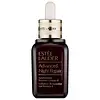What's inside
What's inside
 Key Ingredients
Key Ingredients

 Benefits
Benefits

 Concerns
Concerns

 Ingredients Side-by-side
Ingredients Side-by-side

Water
Skin ConditioningButylene Glycol
HumectantAlcohol
AntimicrobialGlycerin
HumectantBetaine
HumectantPEG/PPG-17/6 Copolymer
SolventGlyceryl Polymethacrylate
Ophiopogon Japonicus Root Extract
Skin ConditioningPhenoxyethanol
PreservativeBis-PEG-18 Methyl Ether Dimethyl Silane
EmollientPEG-60 Hydrogenated Castor Oil
EmulsifyingCarbomer
Emulsion StabilisingTromethamine
BufferingGlycyrrhiza Uralensis Root Extract
Skin ConditioningParfum
MaskingHoney
HumectantJuglans Regia Seed Extract
Skin ConditioningTheobroma Cacao Extract
Skin ConditioningDextrin
AbsorbentLilium Candidum Bulb Extract
Skin ConditioningPaeonia Albiflora Root Extract
Skin ConditioningRehmannia Glutinosa Root Extract
Skin ConditioningPolygonatum Officinale Rhizome/Root Extract
Skin ConditioningNelumbo Nucifera Flower Extract
Skin ConditioningXanthan Gum
EmulsifyingEthylhexylglycerin
Skin ConditioningPortulaca Oleracea Extract
Skin ConditioningLimonene
PerfumingCamellia Sinensis Leaf Extract
AntimicrobialDisodium EDTA
Phenyl Trimethicone
Skin ConditioningChondrus Crispus
MaskingLinalool
PerfumingBiosaccharide Gum-1
HumectantZiziphus Jujuba Fruit Extract
Skin ConditioningNatto Gum
Citronellol
PerfumingCitral
PerfumingPropylene Glycol
HumectantGeraniol
PerfumingChlorphenesin
AntimicrobialHydrogenated Lecithin
EmulsifyingBHT
AntioxidantSodium Dehydroacetate
PreservativePotassium Sorbate
PreservativeCitric Acid
BufferingSorbic Acid
PreservativeTocopherol
AntioxidantWater, Butylene Glycol, Alcohol, Glycerin, Betaine, PEG/PPG-17/6 Copolymer, Glyceryl Polymethacrylate, Ophiopogon Japonicus Root Extract, Phenoxyethanol, Bis-PEG-18 Methyl Ether Dimethyl Silane, PEG-60 Hydrogenated Castor Oil, Carbomer, Tromethamine, Glycyrrhiza Uralensis Root Extract, Parfum, Honey, Juglans Regia Seed Extract, Theobroma Cacao Extract, Dextrin, Lilium Candidum Bulb Extract, Paeonia Albiflora Root Extract, Rehmannia Glutinosa Root Extract, Polygonatum Officinale Rhizome/Root Extract, Nelumbo Nucifera Flower Extract, Xanthan Gum, Ethylhexylglycerin, Portulaca Oleracea Extract, Limonene, Camellia Sinensis Leaf Extract, Disodium EDTA, Phenyl Trimethicone, Chondrus Crispus, Linalool, Biosaccharide Gum-1, Ziziphus Jujuba Fruit Extract, Natto Gum, Citronellol, Citral, Propylene Glycol, Geraniol, Chlorphenesin, Hydrogenated Lecithin, BHT, Sodium Dehydroacetate, Potassium Sorbate, Citric Acid, Sorbic Acid, Tocopherol
Water
Skin ConditioningBifida Ferment Lysate
Skin ConditioningMethyl Gluceth-20
HumectantPEG-75
HumectantBis-PEG-18 Methyl Ether Dimethyl Silane
EmollientButylene Glycol
HumectantPropanediol
SolventCola Acuminata Seed Extract
Skin ConditioningHydrolyzed Algin
Pantethine
EmollientCaffeine
Skin ConditioningLecithin
EmollientTripeptide-32
Skin ConditioningEthylhexylglycerin
Skin ConditioningSodium Rna
Skin ConditioningBisabolol
MaskingGlycereth-26
HumectantSqualane
EmollientSodium Hyaluronate
HumectantOleth-3 Phosphate
Caprylyl Glycol
EmollientLactobacillus Ferment
Skin ConditioningOleth-3
EmulsifyingOleth-5
EmulsifyingAnthemis Nobilis Flower Extract
MaskingYeast Extract
Skin ConditioningCholeth-24
EmulsifyingHydrogenated Lecithin
EmulsifyingCeteth-24
CleansingTocopheryl Acetate
AntioxidantEthylhexyl Methoxycinnamate
UV AbsorberHexylene Glycol
EmulsifyingCarbomer
Emulsion StabilisingTriethanolamine
BufferingTrisodium EDTA
BHT
AntioxidantXanthan Gum
EmulsifyingPhenoxyethanol
PreservativeCI 14700
Cosmetic ColorantCI 19140
Cosmetic ColorantWater, Bifida Ferment Lysate, Methyl Gluceth-20, PEG-75, Bis-PEG-18 Methyl Ether Dimethyl Silane, Butylene Glycol, Propanediol, Cola Acuminata Seed Extract, Hydrolyzed Algin, Pantethine, Caffeine, Lecithin, Tripeptide-32, Ethylhexylglycerin, Sodium Rna, Bisabolol, Glycereth-26, Squalane, Sodium Hyaluronate, Oleth-3 Phosphate, Caprylyl Glycol, Lactobacillus Ferment, Oleth-3, Oleth-5, Anthemis Nobilis Flower Extract, Yeast Extract, Choleth-24, Hydrogenated Lecithin, Ceteth-24, Tocopheryl Acetate, Ethylhexyl Methoxycinnamate, Hexylene Glycol, Carbomer, Triethanolamine, Trisodium EDTA, BHT, Xanthan Gum, Phenoxyethanol, CI 14700, CI 19140
 Reviews
Reviews

Ingredients Explained
These ingredients are found in both products.
Ingredients higher up in an ingredient list are typically present in a larger amount.
BHT is a synthetic antioxidant and preservative.
As an antioxidant, it helps your body fight off free-radicals. Free-radicals are molecules that may damage your skin cells.
As a preservative, it is used to stabilize products and prevent them from degrading. Specifically, BHT prevents degradation from oxidation.
The concerns related to BHT come from oral studies; this ingredient is currently allowed for use by both the FDA and EU.
However, it was recently restricted for use in the UK as of April 2024.
Learn more about BHTBis-Peg-18 Methyl Ether Dimethyl Silane belongs to the siloxanes and silicones classes. It is synthetically created and has a waxy composition.
This ingredient is a humectant and emollient, meaning it helps hydrate the skin. Humectants draw moisture to your skin, while emollients prevent moisture from escaping.
Butylene Glycol (or BG) is used within cosmetic products for a few different reasons:
Overall, Butylene Glycol is a safe and well-rounded ingredient that works well with other ingredients.
Though this ingredient works well with most skin types, some people with sensitive skin may experience a reaction such as allergic rashes, closed comedones, or itchiness.
Learn more about Butylene GlycolCarbomer is a polymer of acrylic acid. Its main role is to create a gel consistency.
A high amount of carbomer can cause pilling or balling up of products. Don't worry, most products contain 1% or less of carbomer.
Ethylhexylglycerin (we can't pronounce this either) is commonly used as a preservative and skin softener. It is derived from glyceryl.
You might see Ethylhexylglycerin often paired with other preservatives such as phenoxyethanol. Ethylhexylglycerin has been found to increase the effectiveness of these other preservatives.
Hydrogenated Lecithin is created from the hydrogenation of lecithin (a group of phospholipids). Hydrogenation is a chemical reaction between hydrogen and another element.
This ingredient is an emollient and emulsifier. As an emollient, it helps soften skin by trapping moisture within. As an emulsifier, it prevents oil and water ingredients from separating.
Phenoxyethanol is a preservative that has germicide, antimicrobial, and aromatic properties. Studies show that phenoxyethanol can prevent microbial growth. By itself, it has a scent that is similar to that of a rose.
It's often used in formulations along with Caprylyl Glycol to preserve the shelf life of products.
Water. It's the most common cosmetic ingredient of all. You'll usually see it at the top of ingredient lists, meaning that it makes up the largest part of the product.
So why is it so popular? Water most often acts as a solvent - this means that it helps dissolve other ingredients into the formulation.
You'll also recognize water as that liquid we all need to stay alive. If you see this, drink a glass of water. Stay hydrated!
Learn more about WaterXanthan gum is used as a stabilizer and thickener within cosmetic products. It helps give products a sticky, thick feeling - preventing them from being too runny.
On the technical side of things, xanthan gum is a polysaccharide - a combination consisting of multiple sugar molecules bonded together.
Xanthan gum is a pretty common and great ingredient. It is a natural, non-toxic, non-irritating ingredient that is also commonly used in food products.
Learn more about Xanthan Gum